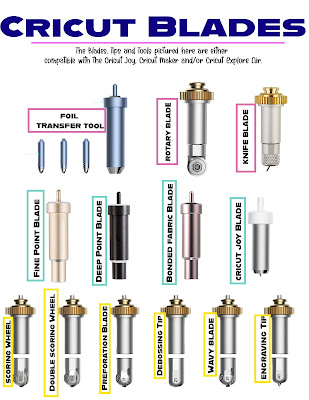How to Sharpen a Dull Blade
There are many reasons why you might need to replace the blades on your Cricut Maker. In addition to the fact that your old blade might not be sharp enough anymore, a dull blade can make it difficult to cut through your materials, making it necessary to change it as soon as possible. Read on to find out how to sharpen a dull blade on your Cricut Maker. In addition, you will learn how to use the knife blade with bonded-fabric and softer fabrics.
Sharpening a cricut maker blade
One of the easiest ways to improve the precision of your cut is by sharpening your cricut maker blades. After a while, these blades will get dull and stop cutting as smoothly. Checking the blade regularly to make sure it is sharp is a good way to prevent this from happening. If you've got scraps or grit that's preventing your cuts, you'll need to replace them.
When it comes to replacing the blade of your Cricut maker, make sure to replace it every six to twelve months. If your blade is in perfect shape, you can simply use a piece of aluminum foil to sharpen it. A good rule of thumb for replacing a blade is three to six months. However, you may want to change it more often if your blade becomes dull and clogged. You can also replace the blade every year or so to ensure maximum performance.
Changing a dull blade
The first thing you should do if your blade is dull is to clean it. To clean your blade, wrap a piece of aluminum foil around it. This will help remove any stuck-on fibers or glue. Use the tin foil to clean the blade and repeat the process at least 30 to 50 times, depending on the thickness of the material. To sharpen the blade further, use a different type of paper.
You can use rubbing alcohol to clean the blade. It will remove any adhesive residue, but it won't cause oxidation or rust. Simply wipe the blade clean with a tissue. Remember to use the recommended materials. Always check the instructions before replacing the blade. To avoid damage to your machine, only use it on recommended materials. Use a new blade if the old one is dull or rusted.
Cutting fabric with a bonded-fabric blade
The bonded-fabric blade is the best option for cutting fabric. It can cut bonded felt or fabric like butter. Its durable construction makes it an ideal choice for a long-term investment. However, if you plan to use your Cricut machine for many years, you can always switch to the paper-cutting blade instead. Here's how to do it!
First, make sure that you have a new blade. A new bonded-fabric blade comes with a curved edge. You should use it for cutting fabrics such as velvet. The bonded-fabric blade is not as sharp as the regular blade. You can also buy a fine-point blade. If you don't have the bonded-fabric blade, you can purchase a new one online. Then, you can use the curved blade instead.
Using a knife blade
One of the biggest problems when using a Knife Blade is that it takes a lot longer to cut, and this is especially true of intricate designs on matboard. However, you can use a tweezers to remove large pieces of debris before continuing. To restore the stickiness of the mat, use a plastic hard bristle brush or paper towel to rub it down. This will remove any remaining debris and restore its stickiness.
When using a knife blade, make sure to open the chipboard first. You don't want to cut through moisture if there's a chance the chipboard will tear during the process. Another good material to use when cutting with a knife blade is light weight balsa, which is between 1/16 and 3/32 inches thick. To use this blade, load the Maker with a light grip mat or a plain piece of printer paper.
Using a rotary blade
The first thing you should know when using a rotary blade with a Cricut Maker is that you can cut multiple layers of fabric with it. To do this, you will need to apply a temporary adhesive to the fabric you want to cut. Place the first layer of fabric on the mat, then lay a second and third layer on top. You can then use a brayer to stick them together.
Once you have the proper housing, you can now use your new rotary blade. However, you should make sure that you keep the original housing. This is because it is specially calibrated to work with the Cricut machine. Using a rotary blade will help you cut your projects faster than you could do by hand. This is particularly helpful if you are cutting sewing patterns with intricate detail. Just remember that you need to calibrate your Cricut Maker before using the blade.







No comments:
Post a Comment